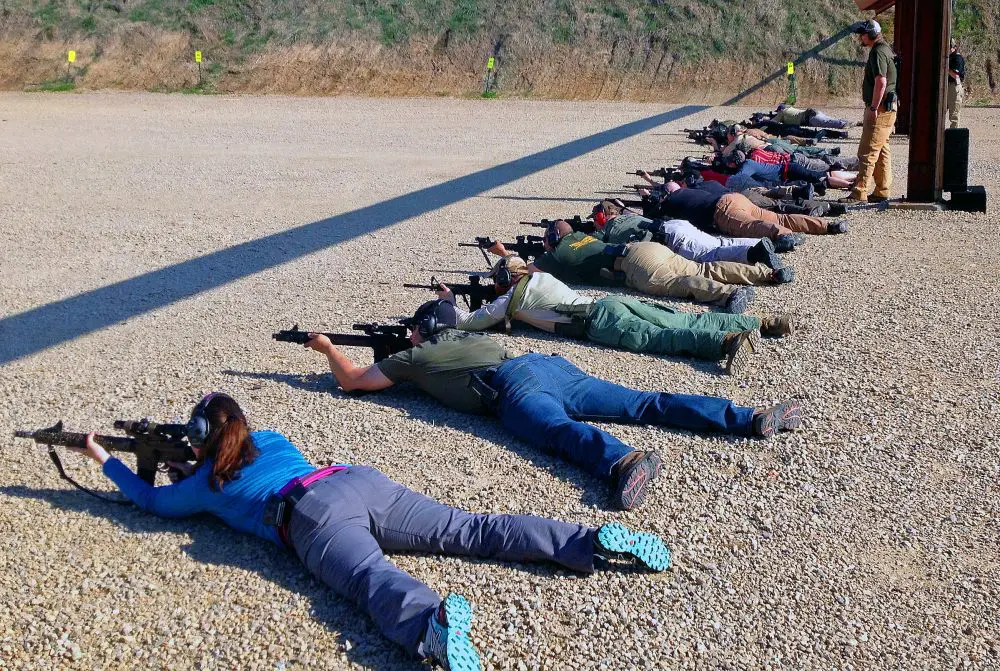Just when you thought it was safe to go back into the pages of S.W.A.T., Claire Wolfe returns for a guest column…
Once upon a time, there was a man named Mitch Snyder. He was not a happy person. After walking out on his wife and children, he got busted for auto-theft and served time in federal prison for interstate transportation of a stolen vehicle. There he met some famous political activists. Inspired, he eventually became a famous activist himself.
Snyder’s “thing” was homeless people—people who would have been dismissed at that time (the mid-1970s) as winos and bums. Snyder kept getting arrested, but now for taking over vacant government buildings to try to force their conversion into homeless shelters.
Sometimes the world needs people like that. People who break the rules. People who force change by being impolite and in-your-face. People who put their own lives on the line for what they believe.
Unfortunately, personal activism to help real people wasn’t enough for Snyder. Single-handedly, he invented the national cause of “homelessness.” Well, not quite single-handedly. When he looked journalists in the eye and told them that three million Americans were homeless—more than one in every 75 of us—the reporters didn’t ask, “Where’d you get that?” They printed the claim as truth.
When Snyder declaimed that 45 homeless people died every single second of the day, reporters didn’t sit down and do the figures on the back of a cocktail napkin. If they had, they’d have discovered that 45 deaths per second amounts to 1.4 billion deaths a year. Clearly, the streets aren’t littered with so many corpses. The figure came from the same place as the three million—Snyder’s imagination.
But the story was good. Never mind the facts. The dire national problem of homelessness was born in the headlines, editorials, and tut-tutting articles of American journalism. Unappealing winos, drug addicts and rootless young men (who still make up the bulk of the homeless) were media-morphed into families of cherubic children and doting mothers forced by circumstances beyond their control to live in cars.
In 1990, the still unhappy Mr. Snyder committed suicide. But 18 years later, the “cause” of homelessness—and the money-raising, money-distributing bureaucratic machines created around it—keeps on rolling along.
It’s not a question of whether some people need help and how best to help them. It’s a question of an entire nation and its governments being snookered by skillful hucksters.
Snyder is dead, but his variety of activism lives on. Tiny groups repeatedly shape our culture and our laws. They determine how our tax monies are spent. They create legislation that gets introduced and passed by gullible legislators who want to look as if they’re “doing something.” They set up false fronts to persuade private individuals and corporations to donate—then spend the money on things few would consider good. The media loves them because they make dramatic stories and often provide easy, pre-cooked “facts.” But they’re stealing our freedoms.
A few examples:
PETA and animal rights: PETA, aka People for the Ethical Treatment of Animals, has done a few good deeds over the years exposing abuses of lab animals and factory-farm animals. Their tactics of using celebrities, shock, and confrontation have won them reams of press and $25 million per year in donations from the public. Unfortunately, many donors have no idea what they’re actually supporting. Go to PETA’s website and you’ll see images of cute kitties and puppies, leading you to believe they’re an animal welfare group.
Alas, their idea of “welfare” includes euthanizing thousands of dogs and cats per year—14,479 since 1998—more than a ton of corpses each month. Their 80-to-90 percent kill rate is insane by today’s standards, when even overcrowded city pounds save 50 percent of their animals. In October 2006, a PETA employee in a PETA van stole a healthy hunting dog and was on her way to PETA headquarters, apparently to kill it, when caught by police (the dog was wearing a radio-tracking collar). Around that time, two other PETA employees were caught euthanizing healthy animals they’d picked up “for adoption” and illegally tossing the corpses into dumpsters.
Most donors probably have no clue that PETA actually aims to get the government to ban all: fishing, farming with animals, hunting, eating of dairy products and eggs, zoos, circuses, rodeos, leather and wool, scientific research involving animals (even when humanely done), horseback riding, pet ownership, and even guide dogs for the blind.
Obviously, this is an extreme minority position. Yet “animal rights” advocates, of which PETA is the 800-pound gorilla, have been extremely influential in getting legislation introduced, particularly at the state and local level, to make owning animals more difficult. And where is the mainstream press? Reporting on the latest celebrity model to be signed by PETA, but cooperatively refraining from reporting the deeper story.
Aztlan: The Aztlan movement, aka the Reconquista, aims to take over a large part of America for Mexico. Whether people of European ancestry would be kicked out, made subservient or simply slaughtered gets a little fuzzy.
Ask my S.W.A.T. colleague Stewart Rhodes about Azatlanistas and you’ll get an earful. Stewart—himself of Mexican-American heritage—will tell you, “They don’t represent ME!” Most of the U.S.’s Mexican population would say the same.
Yet who gets the press? The hard-working, family-raising majority who just want to get along—or the infinitesimally tiny handful of noise-makers? La Voz de Aztlan (an anti-Semitic Marxist group), the Mexica Movement (which believes whites are illegal immigrants), and the Movimiento Estudiantil Chicano de Aztlan (MEChA) (whose constitution states that the organization aims to “politicize our Raza [our race] … for the purpose of liberating Aztlan,” although its main activities seem to be more benign) probably number only a few thousand. We don’t know.
The only things we can be sure of are that these groups are racist and that the media treats them with uncanny respect. Because their activities are reported shallowly as “immigrants rights” or “education,” they are able to pursue their real agendas with little opposition.
“Gun control”: In the pages of S.W.A.T., we hardly need to detail the outrages perpetrated by gun-banners. You’ve already heard the wildly false statistics and exaggerated claims. You already rolled your eyes when the Million Mom anti-gun marchers were able to marshal only a few thousand demonstrators for their big march in Washington, D.C.—and when one of that group’s more prominent members got arrested for tracking down and shooting an innocent man. You’ve already gritted your teeth hearing semiautomatic rifles referred to as “assault weapons.” You already know about the bad laws the anti-gunners’ pet politicians have passed.
Still, we often get the impression that most Americans support “gun control.” Well, yes, that may seem so when pollsters ask carefully crafted questions to people who are ignorant of the real issues. But if support for restricting our right to bear arms is genuinely broad, how do you explain the organizing manual that fell into my hands a few years ago?
The manual, from the nation’s largest anti-gun group (then Handgun Control, Inc., now the Brady Campaign to Prevent Gun Violence), was book-sized and had everything needed to start a local chapter: fund-raising plans, sample ads and editorials, talking points, organization charts. It had everything except the one thing you’d expect: advice on recruiting members. The manual was dedicated solely to building corporate, media and government support. Real people? Who cares about them?
That about sums up the attitude of the typical vocal political minority: People don’t count; only centralized power matters. And never forget that even when a specific group fades away a la Mitch Snyder, its works, its laws, its language, its assumptions and the bureaucracies it spawns live on after it.
Of course, there’s nothing inherently wrong with being either vocal or a minority. After all, majority rule is mere mob-ocracy—famously, two wolves and a sheep voting on what to have for lunch. The problem isn’t the small numbers; it’s the anti-freedom aims, the Machiavellian methods, and the bland, irresponsible compliance of reporters and politicians.
Minorities can be, and often have been, more right than an unthinking mass.
Take, for instance, the minority of Americans who want the government pushed back within the bounds established by the Constitution and the Bill of Rights. They’re asking only that the government obey its own laws and the higher laws of nature (such as the inherent right to self-defense). There’s nothing unreasonable or “fringe-oid” about that, even if only a minority of folks are doing the shouting.
Now, if only the media would decide that that group is as “sexy” as Mitch Snyder, PETA, Aztlan, or the Brady Bunch, the country might be in better shape.





